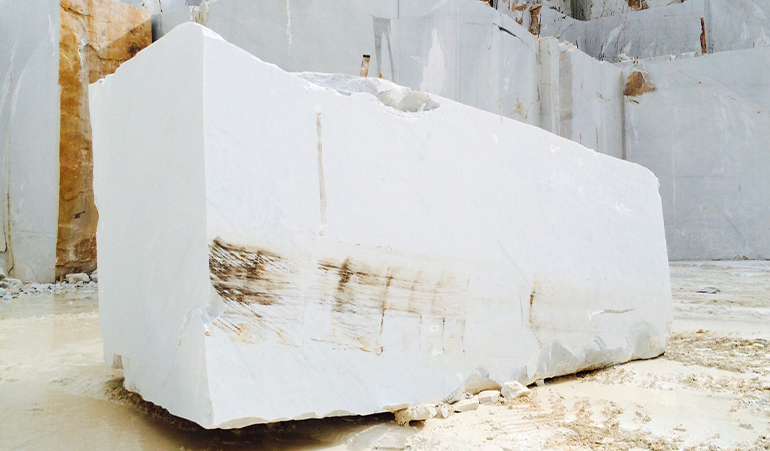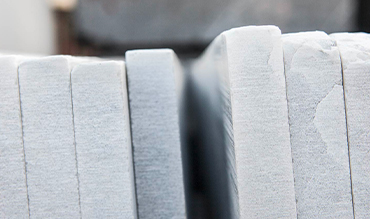-
-
via C.Paolini 3, 54038 Renella di Montignoso (MS)
Stone sector

Stone sector
Marble resining is a technique used to improve the strength and durability of marble, a material which, despite its solidity, is easily subject to scratches, stains and signs resulting from wear. Here, with resins and dedicated epoxy systems, a layer is applied to the surface of the marble so as to protect it from atmospheric agents and signs of wear. There are different intervention procedures and they are specifically designed to adapt to the various stages of marble processing. We can intervene directly on the bank, on the block or on the slab.
Resin coating of the bank
When there is a need to go and intervene directly on the wall because there are difficulties in extracting blocks of marble, so as to minimize waste and avoid breaking the bank or block. After the intervention, it will be possible to proceed with the extraction in safety.
- Surface cleaning
- Application of the resin on the marble
- Application of glass fiber, selecting the most suitable one
- Second application of the resin over the fiberglass layer
- Hardening phase
Resin coating of the block
The restoration of the block is essential when it is important to guarantee the safety of the block and to allow the customer to process an intact block ready to be cut. In the case of the block of marble, there are two types of intervention, one which allows the block to be healed only externally and the other which instead intervenes in depth and heals it in the structure.
The first is LAMINATION
- Surface cleaning
- Application of the resin on the marble
- Application of glass fiber, selecting the most suitable one
- Second application of the resin over the fiberglass layer
- Hardening phase
The second procedure is the VACUUM INFUSION SYSTEM
- Preparation of the block with all the accessories necessary to proceed with the infusion: the nylon films are placed and the glass fiber is sprinkled over the whole block. Once the bag is closed, thanks to a suction system, it is vacuum-packed
- Infusion of epoxy resins, specific resins for this type of procedure as they are liquid and allow the block to absorb them in depth
- Hardening phase
Resin coating of the slab
We proceed with the resin coating of the slab to improve the strength and durability of the material, preserving it from aging and yellowing.
- Preparation and cleaning of the surface
- Plate preheating
- Application of the resin on the surface
- Catalysis of the resin in special ovens
In the case of particularly fragile materials, a reinforcing mesh fixed with resin is first applied to the back of the slab and we speak of screening.

Strengths
An intervention to restore, preserve and improve the beauty of the marble.
-
Greater resistance to wear and abrasion
-
Glossy and spotless surface
-
Marble restoration
When is marble resining necessary?
It is advisable to intervene when the surface is damaged by atmospheric agents or has natural breaks that would prevent it from being worked. Furthermore, it may be necessary when the type of marble is particularly porous.
Which resins are mostly used in this process?
The choice of resin depends on the characteristics of the marble and the intended use, as well as the processing times and phases. We study customized resins for every need, but if the choice falls on standard products, epoxy resins are normally used.
Can the resin cover the defects of the marble?
The resin has the ability to heal some marble defects such as cracks or pores, but it is not able to cover the structural defects of the marble. Its application in the restoration phase is in view of the processing, by correcting the defects and increasing the durability it makes the marble workable without incurring the problem of breakage.

